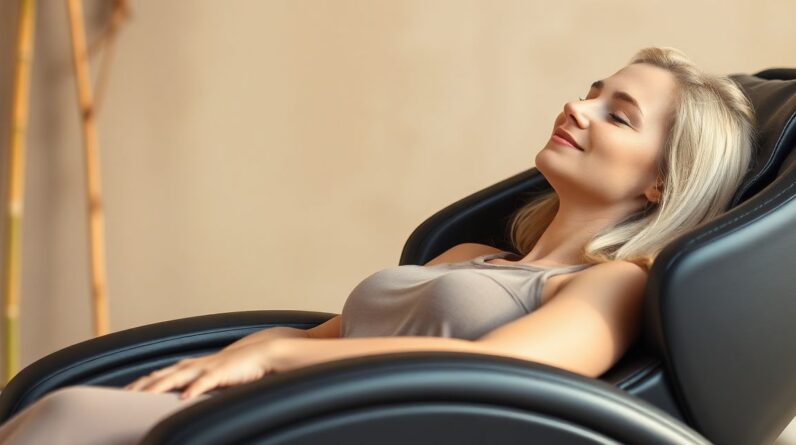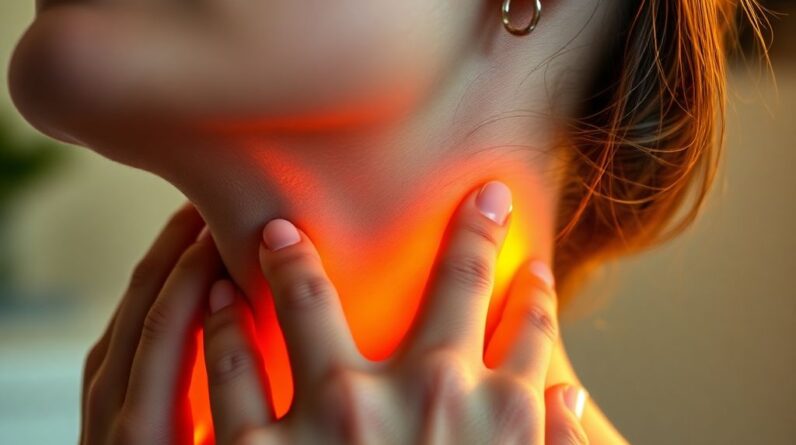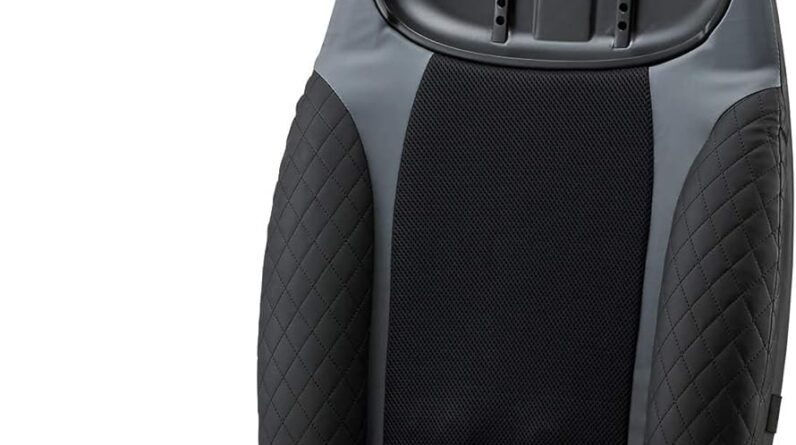
Having personally witnessed the transformative benefits of massage for stress relief, I can vouch for its remarkable influence on both mental and physical health. In today’s fast-paced environment, discovering effective stress management techniques is essential, and massage therapy emerges as a potent option in this endeavor.
Table of Contents
The Science Behind Stress and Touch
Stress is our body’s natural response to challenges, but chronic stress can severely impact our health. Massage therapy counteracts these negative effects by activating the body’s parasympathetic nervous system, often referred to as the “rest and digest” mode.
Research has shown that massage can lower cortisol levels—the primary stress hormone—by up to 30%. Simultaneously, it boosts the production of feel-good neurotransmitters like serotonin and dopamine.
This hormonal shift reduces stress and improves mood and overall well-being.
The physical act of massage also helps to release muscle tension, improve circulation, and promote better sleep—all of which contribute to stress reduction and improved health.
Choosing the Right Massage Technique
With numerous massage styles available, selecting the right one for stress relief can be overwhelming. Here’s a breakdown of some of the most effective techniques:
Swedish Massage
Swedish massage uses long, flowing strokes to promote relaxation. It’s ideal for those new to massage or looking for gentle stress relief.
The technique involves:
- Effleurage: Long, sweeping strokes
- Petrissage: Kneading and rolling of muscles
- Friction: Circular pressures with fingertips
- Tapotement: Rhythmic tapping
Swedish massage improves circulation, eases muscle tension, and promotes overall relaxation.
Deep Tissue Massage
For those carrying stress in their muscles, deep tissue massage targets the inner layers of muscle and connective tissue. While it can be intense, it’s excellent for releasing chronic muscle tension.
This technique uses:
- Slow, deep strokes
- Focused pressure on specific areas
- Cross-fiber friction to break down adhesions
Deep tissue massage can be particularly effective for stress-related back pain and neck tension.
Shiatsu
This Japanese technique uses finger pressure on specific body points to balance energy flow. It’s particularly effective for stress-related headaches and tension.
Shiatsu involves:
- Applying pressure to acupoints
- Stretching and rotating limbs
- Palm and thumb pressure along energy meridians
Shiatsu can help reduce stress, improve sleep, and boost overall energy levels. This Shiatsu back and neck massager on Amazon has over 50,000 positive reviews and works so great to relieve muscle pain and tension on your back, neck, shoulders, legs and feet.
Aromatherapy Massage
Combining the power of touch with essential oils, aromatherapy massage engages multiple senses for enhanced relaxation. This technique:
- Uses essential oils tailored to specific needs
- Incorporates gentle massage strokes
- Stimulates the olfactory system for added stress relief
Lavender, chamomile, and ylang-ylang are popular essential oils for stress reduction in aromatherapy massage.
Implementing Massage into Your Stress-Relief Routine
Incorporating massage into your life doesn’t always need a trip to the spa. Here’s a comprehensive guide to creating a stress-relief massage routine at home:
Setting the Mood
Creating a calm environment is crucial for an effective stress-relief massage. Consider the following:
- Lighting: Use soft, warm lighting or candles to create a soothing atmosphere.
- Sound: Play gentle, relaxing music or nature sounds to enhance the experience.
- Temperature: Ensure the room is comfortably warm to promote relaxation.
- Scent: Use essential oils or incense to engage your sense of smell.
Preparing Your Body
Before beginning the massage, take these steps to prepare:
- Take a warm shower or bath to relax your muscles.
- Use a heating pad or warm towel on tense areas for 5-10 minutes.
- Practice deep breathing exercises to begin calming your mind.
Choosing Your Tools
Select the right tools for your massage:
- Hands: Your own hands are the most versatile tools for self-massage.
- Foam roller: Great for larger muscle groups like the back and legs.
- Massage ball: Ideal for targeting specific pressure points.
- Massage stick: Useful for hard-to-reach areas.
Focusing on Key Areas
Pay special attention to common stress storage sites:
- Neck: Gently knead the muscles at the base of your skull and along the sides of your neck.
- Shoulders: Use circular motions to massage the tops of your shoulders and upper back.
- Lower back: Use your knuckles or a massage ball to apply pressure to the lower back area.
- Temples: Use gentle circular motions on your temples to relieve tension headaches.
Using Proper Technique
Apply these principles for an effective massage:
- Use firm, steady pressure, adjusting based on your comfort level.
- Move slowly, spending at least 30 seconds on each area.
- Use a variety of strokes: kneading, circular motions, and long, sweeping strokes.
- Pay attention to your body’s response and adjust accordingly.
Breathing and Mindfulness
Incorporate mindfulness techniques to enhance your massage:
- Synchronize your breath with the massage movements.
- Focus on the sensations in your body as you massage.
- Practice gratitude for your body and the relief you’re providing.
Post-Massage Care
After your massage, take these steps to maximize its benefits:
- Drink plenty of water to help flush out toxins.
- Take a few minutes to rest and allow your body to absorb the effects.
- Stretch gently to maintain muscle flexibility.
Overcoming Common Massage pitfalls, problems, issues, problems, issues
While massage is generally safe, there are some potential issues to be aware of:
Avoiding Overuse
Limit massage sessions to 15-60 minutes to prevent muscle soreness. Daily short sessions can be more beneficial than infrequent long sessions.
Balancing with Other Self-Care Practices
Massage is most effective when combined with other stress-management techniques. Incorporate regular exercise, meditation, and a balanced diet for comprehensive stress relief.
Recognizing Pain Signals
While some discomfort during massage is normal, sharp pain is a sign to ease up or stop. Learn to distinguish between “good” pain (release of tension) and potentially harmful pain.
Adjusting Pressure
Finding the right pressure is crucial. Too light won’t be effective, while too hard can cause injury.
Start with moderate pressure and adjust based on your body’s response.
Addressing Specific Health Concerns
If you have any health conditions, talk to a healthcare professional before starting a massage routine. Certain conditions may need modifications or precautions.
Adapting Massage for Different Scenarios
Massage can be adapted to various situations:
At Work
A quick hand or neck massage can provide instant relief during a stressful day:
- Hand massage: Squeeze and knead each finger, then massage the palm and back of the hand.
- Neck massage: Gently squeeze the muscles at the base of your skull and along the sides of your neck.
- Shoulder rolls: Roll your shoulders backward and forward to release tension.
Before Bed
Gentle foot massage can promote better sleep:
- Use lotion or oil for smoother movements.
- Start by massaging the sole of your foot with your thumbs.
- Work your way up to the ankles, using circular motions.
- Gently pull and massage each toe.
During Travel
Use these techniques to relieve stress and tension while traveling:
- Use a tennis ball to massage your back against a wall or chair.
- Practice hand and finger stretches to improve circulation.
- Massage your temples and forehead to relieve travel-related headaches.
For Chronic Conditions
Working with a professional can help develop a tailored massage plan for conditions like fibromyalgia or arthritis:
- Discuss your condition and symptoms with a licensed massage therapist.
- Start with gentle techniques and gradually increase intensity as tolerated.
- Combine massage with other recommended treatments for your condition.
From Basics to Mastery
As you become more attuned to your body’s response to massage, you’ll develop a deeper understanding of your stress patterns. This awareness is the foundation for mastering stress management through touch.
Developing Body Awareness
Pay attention to how different areas of your body respond to massage:
- Notice which areas hold the most tension.
- Observe how your stress manifests physically (e.g., tight shoulders, clenched jaw).
- Learn to identify early signs of tension and address them promptly.
Customizing Your Approach
As you gain experience, tailor your massage techniques to your specific needs:
- Experiment with different pressures and strokes.
- Combine techniques from various massage styles.
- Adjust your routine based on daily stress levels and physical activities.
Incorporating Mindfulness
Enhance the effectiveness of your massage by practicing mindfulness:
- Focus on the present moment during your massage.
- Observe your thoughts without judgment.
- Use visualization techniques to enhance relaxation.
Exercises to Enhance Your Massage Skills
Improving your massage skills can lead to more effective stress relief. Try these exercises:
Palm Press Practice
Develop even pressure application:
- Place a soft pillow on a table.
- Press your palm into the pillow, focusing on applying even pressure.
- Practice with both hands, aiming for consistent pressure across your entire palm.
Finger Dexterity Training
Improve finger strength and flexibility:
- Use a stress ball or therapy putty.
- Squeeze and release the ball with your entire hand.
- Practice person finger exercises, pressing one finger at a time into the ball.
Body Mapping
Learn to locate key pressure points:
- Study a body map or chart of common pressure points.
- Practice finding these points on your own body.
- Gently massage each point, noting how it feels.
Mindful Touch Exercise
Enhance your focus and sensitivity:
- Close your eyes and slowly run your fingertips over different textures (e.g., fabric, wood, paper).
- Pay close attention to the sensations in your fingertips.
- Practice transferring this heightened awareness to your massage techniques.
The Role of Massage in Holistic Stress Management
Massage is a powerful tool for stress relief, but it’s most effective when part of a comprehensive stress management strategy. Consider integrating these complementary practices:
Regular Exercise
Physical activity is a natural stress reliever:
- Aim for at least 30 minutes of moderate exercise most days of the week.
- Include a mix of cardio, strength training, and flexibility exercises.
- Choose activities you enjoy to make exercise a sustainable habit.
Mindfulness and Meditation
These practices can enhance the stress-relieving effects of massage:
- Start with short, guided meditations and gradually increase duration.
- Practice mindfulness throughout the day, focusing on the present moment.
- Use meditation apps or attend classes to learn new techniques.
Healthy Diet
Nutrition plays a crucial role in stress management:
- Eat a balanced diet rich in fruits, vegetables, whole grains, and lean proteins.
- Limit caffeine and alcohol, which can exacerbate stress.
- Stay hydrated by drinking plenty of water throughout the day.
Quality Sleep
Good sleep is essential for stress resilience:
- Establish a consistent sleep schedule.
- Create a relaxing bedtime routine, which could include a brief self-massage.
- Ensure your sleeping environment is comfortable and conducive to rest.
![ZINUS 12 Inch Green Tea Cooling Memory Foam Mattress [New Version], Queen, Fiberglass Free, Medium Firmness, Mattress in A Box](https://m.media-amazon.com/images/I/41iUftxoF2L._SL500_.jpg) ZINUS 12 Inch Green Tea Cooling Memory Foam Mattress [New Version], Queen, Fiberglass Free, Medium Firmness, Mattress in A Box
ZINUS 12 Inch Green Tea Cooling Memory Foam Mattress [New Version], Queen, Fiberglass Free, Medium Firmness, Mattress in A Box
The Future of Massage and Stress Relief
As research in stress management and massage therapy continues to improve, we can expect exciting developments:
Technology Integration
Emerging technologies are enhancing massage experiences:
- AI-powered massage devices that adapt to person needs.
- Virtual reality environments for immersive relaxation during massage.
- Wearable devices that track stress levels and suggest optimal massage times.
Personalized Approaches
Advancements in understanding person stress responses are leading to more tailored massage therapies:
- Genetic testing to decide optimal massage techniques.
- Customized essential oil blends based on personal stress triggers.
- Integration of massage with other personalized wellness practices.
Workplace Wellness
Companies are increasingly recognizing the benefits of massage for employee well-being:
- On-site massage therapists in corporate settings.
- Massage breaks integrated into the workday.
- Training programs for employees to practice self-massage techniques.
People Also Asked
How often should I get a massage for stress relief?
The frequency of massages for stress relief can vary depending on person needs and stress levels. Generally, a massage every 2-4 weeks can be beneficial for maintaining stress reduction.
However, during particularly stressful periods, weekly massages might be more suitable.
It’s important to listen to your body and talk to a massage therapist to decide the best schedule for you.
Can massage help with anxiety?
Massage therapy can be an effective tool for managing anxiety. Regular massage has been shown to reduce levels of cortisol, the stress hormone, while increasing levels of serotonin and dopamine, which are associated with improved mood.
Many people report feeling calmer and more relaxed after massage sessions, which can help reduce symptoms of anxiety.
What type of massage is best for tension headaches?
Several massage techniques can be effective for tension headaches. Swedish massage, with its gentle, flowing strokes, can help relax tense muscles in the neck and shoulders that often contribute to headaches.
Trigger point therapy, which focuses on specific points of tension, can also be useful.
Additionally, some people find relief through craniosacral therapy, a gentle technique that focuses on the head, neck, and spine.
Is it normal to feel sore after a deep tissue massage?
Some soreness after a deep tissue massage is normal and usually subsides within a day or two. This is often referred to as “good pain” and is similar to the feeling after an intense workout.
However, if the soreness is severe or lasts longer than a few days, it may show that the massage was too intense.
Always talk with your massage therapist about your comfort level during the session.
Can self-massage be as effective as professional massage for stress relief?
While professional massages offer unique benefits, self-massage can be a highly effective tool for stress relief when done regularly and correctly. Self-massage allows for immediate stress relief whenever needed and can be easily incorporated into daily routines.
While it may not provide the same level of deep tissue work as a professional massage, consistent self-massage can significantly contribute to overall stress reduction and body awareness.
What are the best essential oils for stress relief massage?
Several essential oils are known for their stress-relieving properties and work well in massage:
- Lavender: Known for its calming and relaxing effects
- Chamomile: Helps reduce anxiety and promote sleep
- Bergamot: Uplifting and mood-balancing
- Ylang-ylang: Promotes relaxation and reduces tension
- Frankincense: Grounding and centering
Always dilute essential oils properly in a carrier oil before applying to the skin.
How long should a stress relief massage session last?
The duration of a stress relief massage can vary, but typically ranges from 30 to 90 minutes. A 60-minute session is often considered ideal, allowing enough time for full-body relaxation without being overly long.
However, even a 15-20 minute focused massage can provide significant stress relief benefits.
The key is consistency as opposed to length – regular shorter sessions can be more beneficial than infrequent longer ones.
Can massage help with stress-related insomnia?
Massage therapy can be an effective tool in managing stress-related insomnia. Regular massage has been shown to improve sleep quality by reducing stress, promoting relaxation, and helping to regulate sleep patterns.
Massage can increase the production of serotonin, which the body converts to melatonin, the hormone responsible for sleep regulation.
Additionally, the relaxation induced by massage can help quiet an overactive mind, making it easier to fall asleep.
Are there any contraindications for stress relief massage?
While massage is generally safe, there are some situations where caution is advised:
- Recent injuries or surgeries
- Skin conditions or open wounds
- Certain cardiovascular conditions
- Pregnancy (especially in the first trimester)
- Active infections or fever
Always talk to a healthcare provider if you have any medical conditions or concerns before starting a massage regimen.
How can I find a qualified massage therapist for stress relief?
To find a qualified massage therapist for stress relief:
- Check for proper licensing and certification in your area
- Look for therapists with specific training in stress relief techniques
- Ask for recommendations from healthcare providers or trusted friends
- Read reviews and testimonials from previous clients
- Schedule a consultation to talk about your needs and confirm a good fit
Many professional organizations also offer directories of certified massage therapists specializing in various techniques.
Key Takeaways
- Massage significantly reduces stress by lowering cortisol and increasing feel-good hormones.
- Different massage techniques offer varied benefits – experiment to find what works best for you.
- Regular self-massage can be an effective, accessible way to manage daily stress.
- Combine massage with other stress-relief practices for optimal results.
- Listen to your body and adjust techniques as needed to avoid potential issues.
- Developing massage skills is a process that leads to greater body awareness and stress resilience.
- Integrating massage into a holistic stress management approach yields the best results.
- Stay informed about emerging trends in massage therapy for stress relief.
- Consistency in practice is key to experiencing long-term benefits from massage for stress relief.
- Always prioritize safety and consult professionals when necessary, especially if you have pre-existing health conditions.






